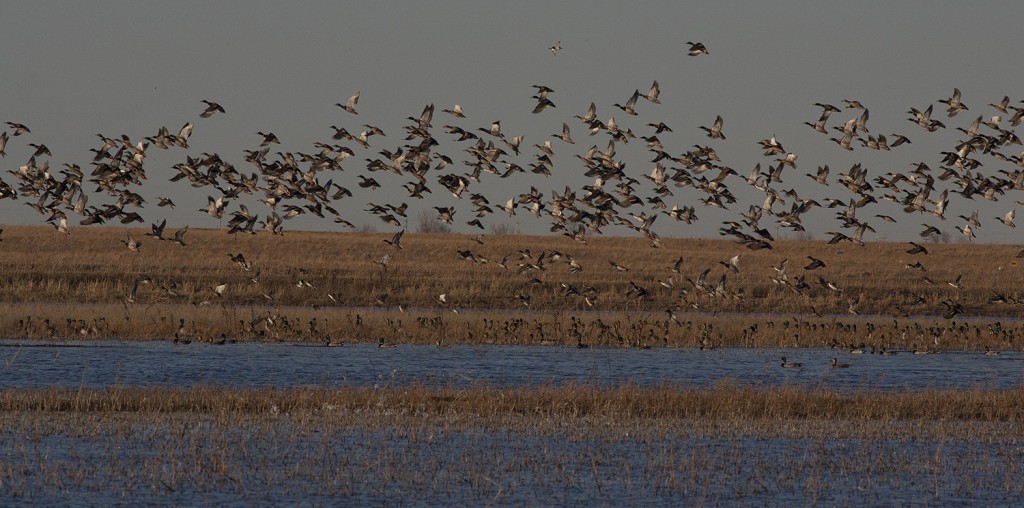THE FIGHT FOR OUR WETLA NDS GOES ON.
NDS GOES ON.
In 2001, the U.S. Supreme Court dealt a crippling blow to the protection of America’s wetlands and the wildlife these wetlands support. The court’s decision in the case SWANCC v. Army Corp of Engineers, followed a year later by similar decisions in the Carabel and Rapanos cases, ended the Corps of Engineers’ authority to protect isolated wetlands and the headwaters of streams.
On April 21, the Corps and the Environmental Protection Agency proposed a new set of rules to define “the waters of the United States.” These new rules would return some measure of protection to smaller bodies of water and watercourses, many of which are crucial to waterfowl and a wide variety of fish. The new rules use language from the Supreme Court’s SWANCC decision to limit federal authority— they would apply only to those wetlands that significantly affect the chemical, physical, and biological integrity of navigable waters.
Conservation groups were satisfied with this significant compromise and had hoped that the rules would be adopted, allowing the nation to continue its effort to protect important marshlands like the prairie potholes and the upper reaches of trout and salmon streams in the Appalachians, the upper Midwest, the Rockies, and the Pacific coast. The EPA and Corps of Engineers have asked for comments from concerned citizens and organizations.
But opponents of the rules aren’t waiting for the final rulemaking proposal. Organizations like the Farm Bureau Federation and the National Association of Homebuilders have brought pressure to bear on Congress to block any funding for “jurisdiction under the Clean Water Act.” The House of Representatives has already passed an appropriations bill that would deny the Corps of Engineers funding to protect the wetlands in question, and the Senate is considering a similar proposal.
This issue has been swathed in a fog of judicial hairsplitting and legislative paralysis for more than a decade, and as Congress has temporized, losses of the most productive wetland types have continued. Between 2001 and 2011, the Dakotas have lost 154,000 acres of prairie potholes. According the U.S. Fish and Wildlife Service, “emergent wetland area also declined in other Midwestern States, including Nebraska, Kansas, Missouri, Indiana, and Michigan. Losses were observed in the Lower Mississippi Alluvial Plain States of Arkansas, Mississippi, and Louisiana and the southeastern States of North Carolina, South Carolina, Georgia, Florida, and Alabama.”
The ongoing loss of wetlands in the Midwest, combined with the loss of upland cover maintained under the farm bill, will decimate wildlife in America’s heartland. Waterfowl, resident upland birds, and deer will take a huge hit, and the long-term decline of nongame grassland birds will resume.
If you care about these wild things, if you care about clean water and air, if you care about protecting fertile topsoil, please contact your Congressional representatives in both houses. Tell them you support protection of isolated wetlands under the Clean Water Act and that they should, too.
And don’t wait.
Leave a Reply
You must be logged in to post a comment.